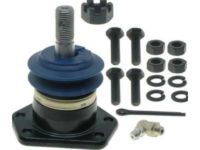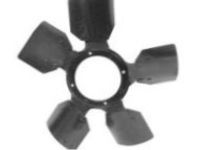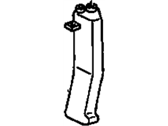Why choose GMPartsGiant
- Large Inventory
The best site to buy Chevrolet Astro genuine parts for years has been GMPartsGiant.com. We're the best online parts and accessory store for your Chevrolet Astro. GMPartsGiant.com offers a large parts and accessory inventory to cover all your vehicle's repairs. Feel free to browse through our genuine Chevrolet Astro parts and accessory catalog to find all your vehicle's needs.
- Fast Shipping Times
All of our Chevrolet Astro auto parts and accessories are expedited directly from verified dealers and backed by the manufacturer's warranty. Our experienced team ensures the orders are packed to provide quick transit times. The majority of the orders are shipped out within a couple of business days to get the parts out to you as fast as possible.
- Low Prices
Our low prices say it all. You can rest assured that you will always receive unbeatable prices on OEM Chevrolet Astro parts. Our giant inventory is beyond compare and has everything you need at an extraordinary value not found anywhere else. Whether you're restoring an old vehicle or upgrading the performance of your vehicle you can count on the quality of our products without hurting your bank account.
Popular Genuine Chevrolet Astro Parts
- Engine Parts View More >
- Fuel System, Exhaust, Emission System Parts View More >
- Brakes Parts View More >
- Transmission - Automatic Parts View More >
- Frames, Springs, Shocks, Bumpers Parts View More >
- Cooling System, Grille, Oil System Parts View More >
- Front Axle, Front Suspension, Steering Parts View More >
- Front End Sheet Metal, Heater Parts View More >
Shop Genuine Chevrolet Astro Parts with GMPartsGiant.com
The Chevrolet Astro is a versatile van produced by American automaker General Motors from 1985 to 2005. Known for its wide array of configurations, the Astro was available as a passenger minivan and a cargo van. It was initially launched with engine options including a 2.5 L four-cylinder producing 98 hp, and two variants of a 4.3 L V6 generating 165 hp and 200 hp respectively. However, in its 1995 facelift, a single 4.3 L 190 hp V6 became the only powertrain offering. The Astro, being GM's first minivan, was a rear-wheel-drive vehicle, with an all-wheel-drive option introduced in 1990. It utilized light-truck powertrain components to keep costs down, while still providing substantial towing capacity of up to 5,500 lb (2,500 kg). The transmission offerings comprised a 4-speed automatic, 4-speed manual, and 5-speed manual. During its production lifespan, the Astro underwent various upgrades, including the introduction of a new analog dashboard and hydroboost braking system in 1990, door form changes in 1992, and transmission updates in 1993. The second-generation model brought significant design changes, notably an extended nose and horizontally-mounted rectangular headlights. Production ended in 2005, with approximately 3.2 million units produced. The Astro remains a symbol of Chevrolet's robust and adaptable engineering.
Chevrolet Astro van owners have reported encountering certain problems after driving their vehicles for some time. The most common include engine issues, characterized by rough idling, cylinder misfires, and diminished performance. Owners have also reported unusual noises from the engine bay and excessive vibration or engine movement. These problems can typically be attributed to failing engine mounts, spark plugs, ignition systems, or deteriorating vacuum seals. The second most reported issue concerns the suspension system, often a result of accumulated wear and tear from high mileage. Symptoms include a mismatch between the indicator and gear, inability to turn off the vehicle, non-functioning cruise control, and sluggish acceleration, which can stem from a faulty shift or throttle cable. Among the various components of the Chevrolet Astro, the washer reservoir is of particular importance as it supplies fluid to the windshield wiper or wiper blade to keep the windshield clean. Another vital part, the cabin air filter, ensures a comfortable driving environment by purifying the air entering the vehicle's ventilation system. Despite their inconspicuous nature, these parts play significant roles in the vehicle's overall operation.
Opting for OEM parts is the ultimate decision for ensuring top-notch quality and optimal functionality. These parts undergo rigorous quality inspections and are meticulously crafted to meet Chevrolet's factory standards, thereby guaranteeing a hassle-free installation process. On our website, we proudly offer genuine Chevrolet Astro parts, like Transmission - Manual, Rear Body Structure, Moldings & Trim, Cargo Stowage at the market's most competitive prices. We are confident that choosing brand new OEM Chevrolet Astro parts, such as Transfer Case from our site will save you both trouble and money.
Chevrolet Astro Parts Questions & Answers
- Q: How to inspect the Center Link,Idler Arm,Pitman Arm and Tie Rod on Chevrolet Astro?A: While inspecting the linkage system of a steering, look for play in the system by shaking the wheel and checking dial indicator reading and assessing idler arm wear. Also, check for disintegrated joint boots, worn-out or damaged parts of the linkage. Loosening lug nuts of the wheels is first step to be taken before unbolting tie rod end from steering knuckle and relay rod in order to get rid of tie-rod. A new tie-rod end can only be put when one knows how long it was adjusted initially by measuring distance between adjuster tube and ball stud before detaching tie-rod end from vehicle assembly. The replacement part must be greased prior to being screwed into adjuster tube; otherwise inner side should receive no lubricant at all except being inserted into relay rod through a nut which keeps it in place. The outer connection where castellated nut is used is however tightened on steering knuckles only as much as possible without causing strip off threads. Then tighten clamp nuts and install wheel; finally lower vehicle onto ground surface so that tire does not spin while rotating steering wheel on jack stands.Loosen nut then separate two jaw puller to detach it from relay rod if need arises to remove idler arm then followed by removing idler arm-to-frame bolts. Bolt idler arm on frame using its thread and insert it in relay rod with sieving nut via ball stud on idler arm when installing it back. Inner tie rods ends plus idlers have been separated before separating connecting rod's ball stud from Pitman along with shoulder pivots namely relay rods.Both removal processes are similar except that during installation all nuts should be tightened just like any other component up to specified torque values which indicate tighter or loose fastening necessary depends upon design purposes.
- Q: How do you replace the upper balljoint on Chevrolet Astro?A: To replace the upper balljoint, start by loosening the wheel lug nuts and raising the vehicle on jackstands. Remove the wheel and place a jack or jack stand under the lower control arm. Remove the cotter pin and back off the nut on the balljoint stud. Use a special tool or a fabricated equivalent to press the balljoint out of the steering knuckle. Drill holes in the rivet heads and use a drill bit to remove them. Knock out the rivet shanks and remove the old balljoint from the control arm. Position the new balljoint on the control arm and install the bolts and nuts provided. Tighten them to the specified torque. Insert the balljoint stud into the steering knuckle and tighten the nut. Install a new cotter pin and the bracket for the wheel speed sensor harness if necessary. Install the balljoint grease fitting and fill the joint with grease. Finally, install the wheel and drive the vehicle to an alignment shop for a front-end alignment check and adjustment if needed. For the lower balljoint, the process is different as it requires special tools. The lower control arm needs to be removed and the old balljoint pressed out and the new one pressed in.
- Q: How to check and replace a fan clutch and Radiator fan on Chevrolet Astro?A: All V6 and some four-cylinder engines are equipped with thermostatically controlled radiator fan clutches. To check the radiator fan clutch, start the engine when it is lukewarm and let it run for two minutes. For safety purposes, remove the key from the ignition switch. Turn the fan blades and note the resistance, which should be moderate depending on the temperature. Drive the vehicle until the engine is warmed up, then shut it off and remove the key.
- Q: How do I remove the coolant overflow and windshield washer reservoirs on Chevrolet Astro?A: To remove the coolant overflow and windshield washer reservoirs, start by disconnecting the overflow hose from the radiator filler neck. Then, remove the fasteners securing the reservoirs to the radiator core support. Lift up both reservoirs and detach the coolant reservoir from the windshield washer reservoir before removing them from the vehicle.





















































